Abstract
1. The properties of self-innervated (S-EDL, S-SOL) and cross-innervated (X-EDL, X-SOL) extensor digitorum longus (EDL) and soleus (SOL) muscles have been determined at various times between 25 and 490 days after operations, and these are compared with the properties of normal muscles from unoperated animals of about the same age.
2. The muscle fibres of X-SOL were 1·15 times longer than fibres of N-SOL and S-SOL at about 480 days after operations but the diameter of fibres was the same in the three muscles.
3. The length of muscle fibres was the same in X-EDL, N-EDL and S-EDL 480 days after operations but the fibres of X-EDL failed to grow in cross-sectional area after innervation by soleus nerve fibres.
4. The twitch: tetanus ratio was altered transitorily in both X-EDL and X-SOL but returned to near normal values within about 300 days after operations.
5. The time courses of isometric contractions and the force: velocity properties were virtually the same in normal and self-innervated muscles 480 days after operations. The isometric twitch contraction time was about 13 msec for N-EDL, 25 msec for X-EDL, 34 msec for N-SOL and 15 msec for X-SOL, and the intrinsic speed of shortening of sarcomeres was about 45·1 μ/sec for N-EDL, 22·5 μ/sec for X-EDL, 19·8 μ/sec for N-SOL and 33·8 μ/sec for X-SOL; in these respects there was incomplete transformation of EDL to a slow muscle and of SOL to a fast muscle.
6. There was a high degree of correlation between the intrinsic speed of shortening of sarcomeres and the isometric twitch contraction time but there was no correlation between isometric twitch contraction time and twitch: tetanus ratio of self-innervated and cross-innervated muscles 200-480 days after operations, and normal muscles from unoperated animals of the same age.
7. The relation between intrinsic speed of shortening of sarcomeres and isometric twitch contraction time was approximately hyperbolic for normal, self-innervated and cross-innervated EDL and SOL muscles 480 days after operations.
8. The maximum speed of shortening of whole muscle fibres was the same for X-SOL, S-EDL and N-EDL, and the same for X-EDL, S-SOL and N-SOL. The possibility that a neural influence determines the speed of shortening of whole fibres is discussed.
Full text
PDF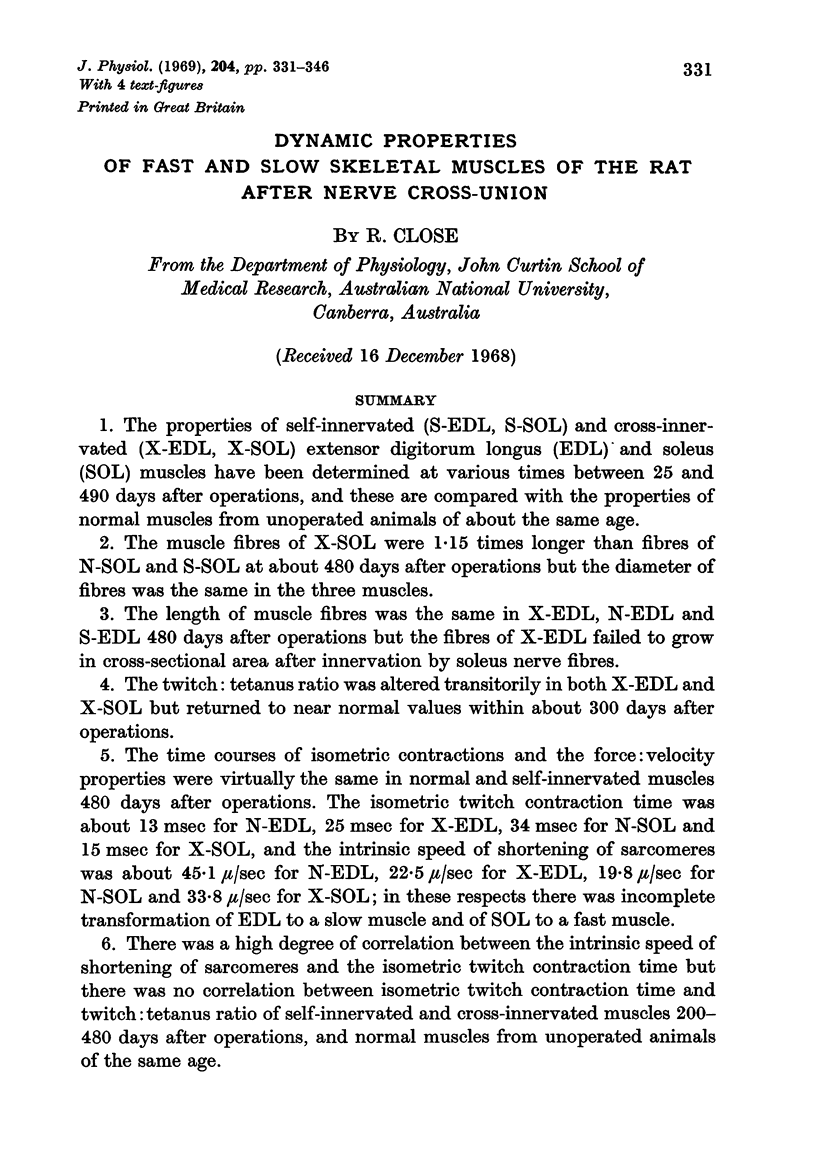
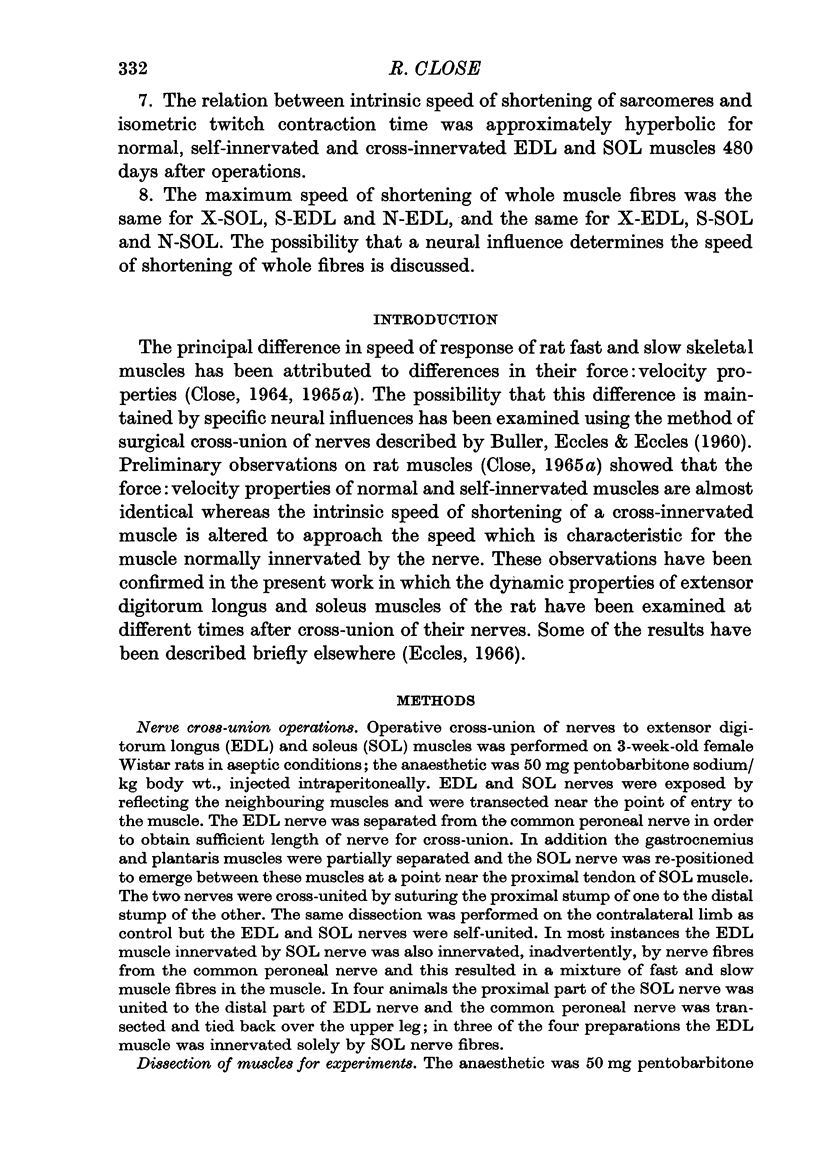
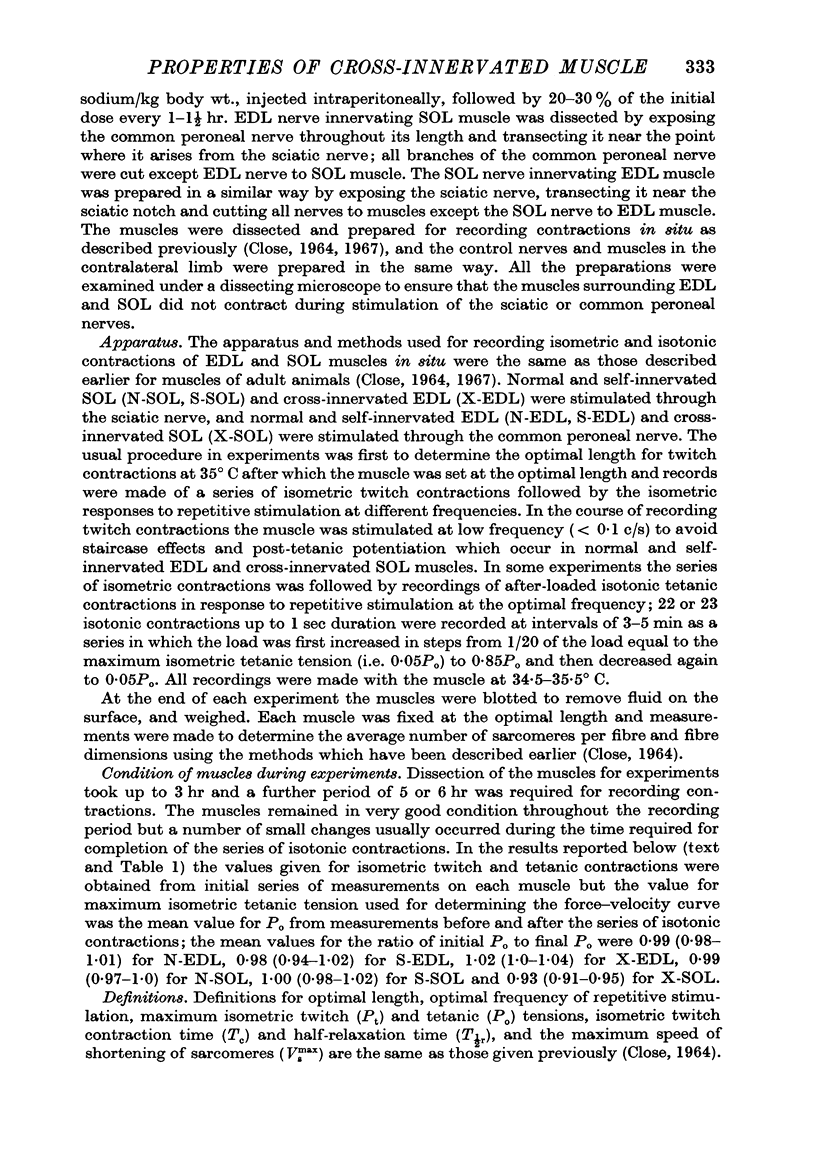
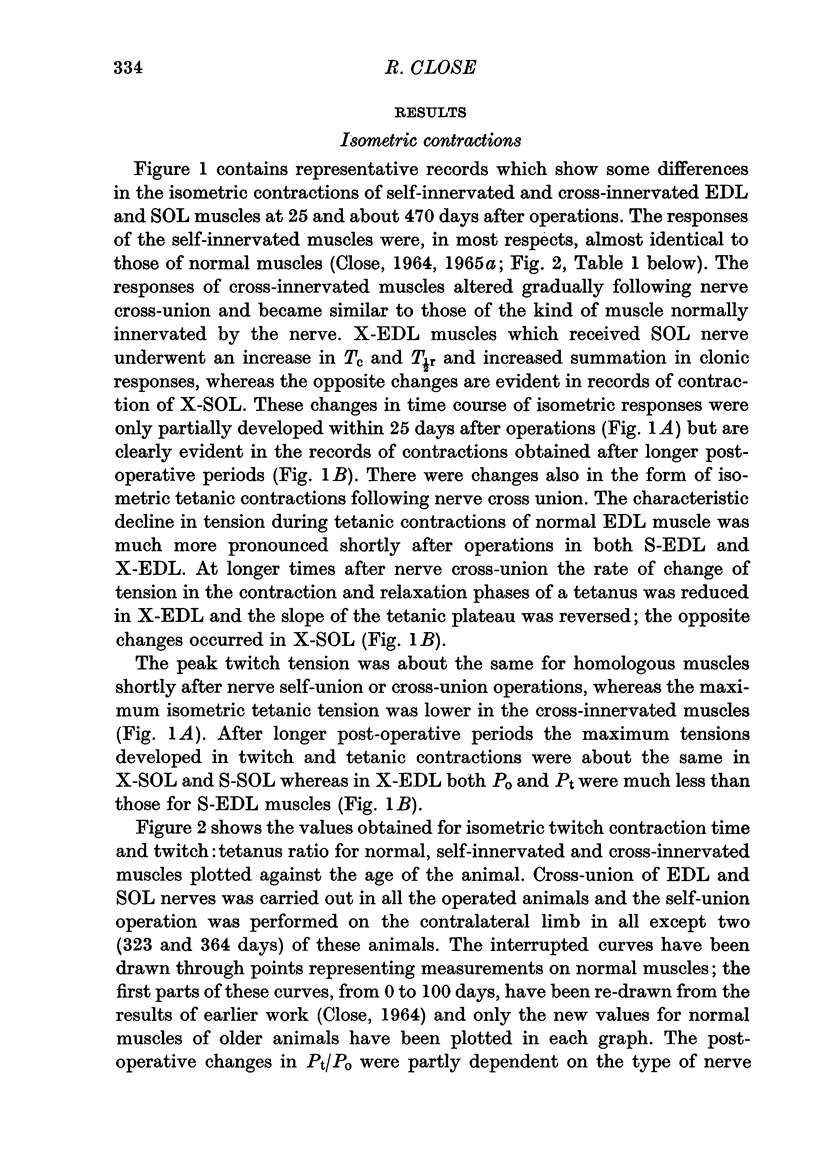
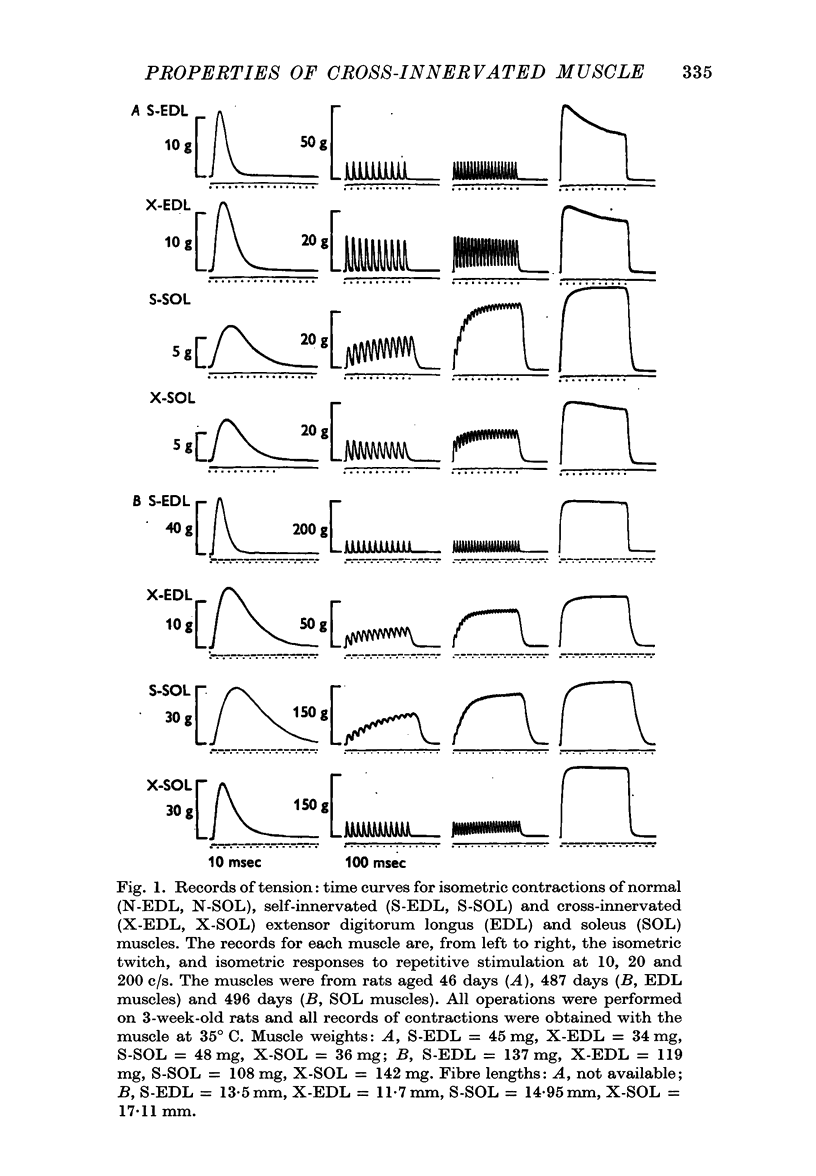
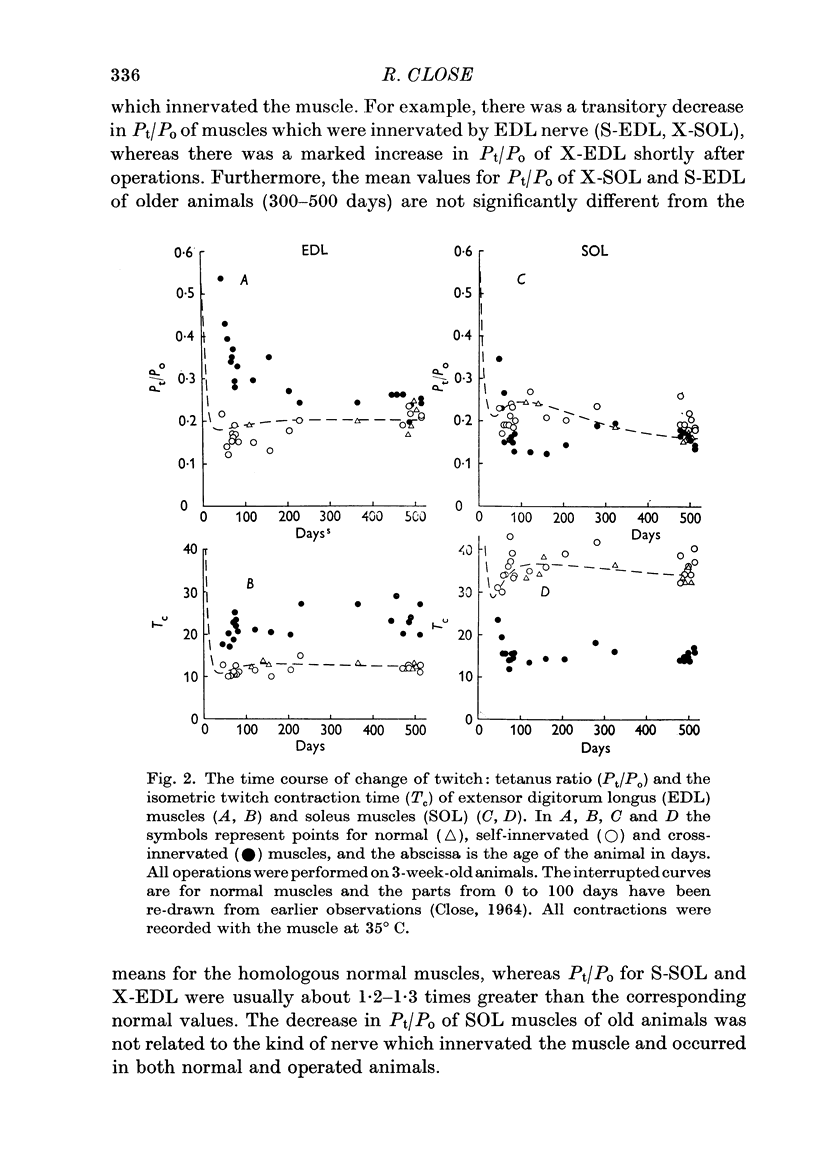
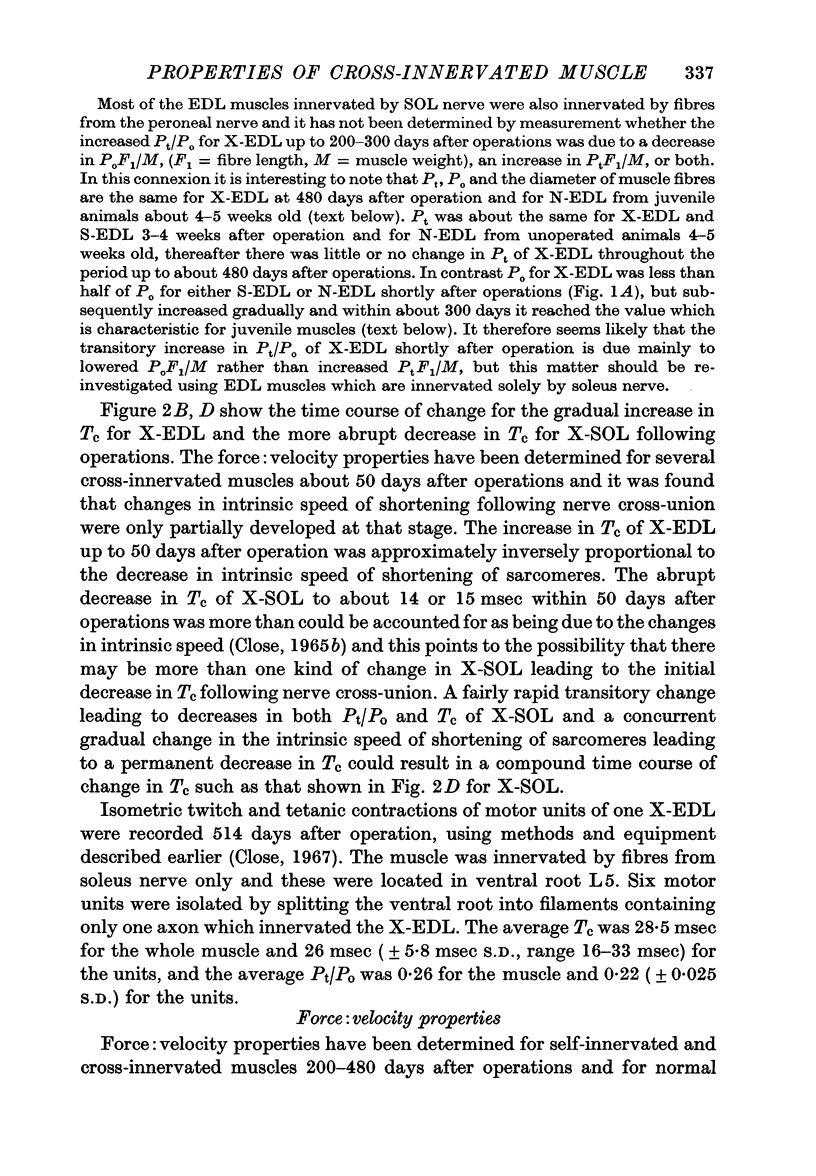
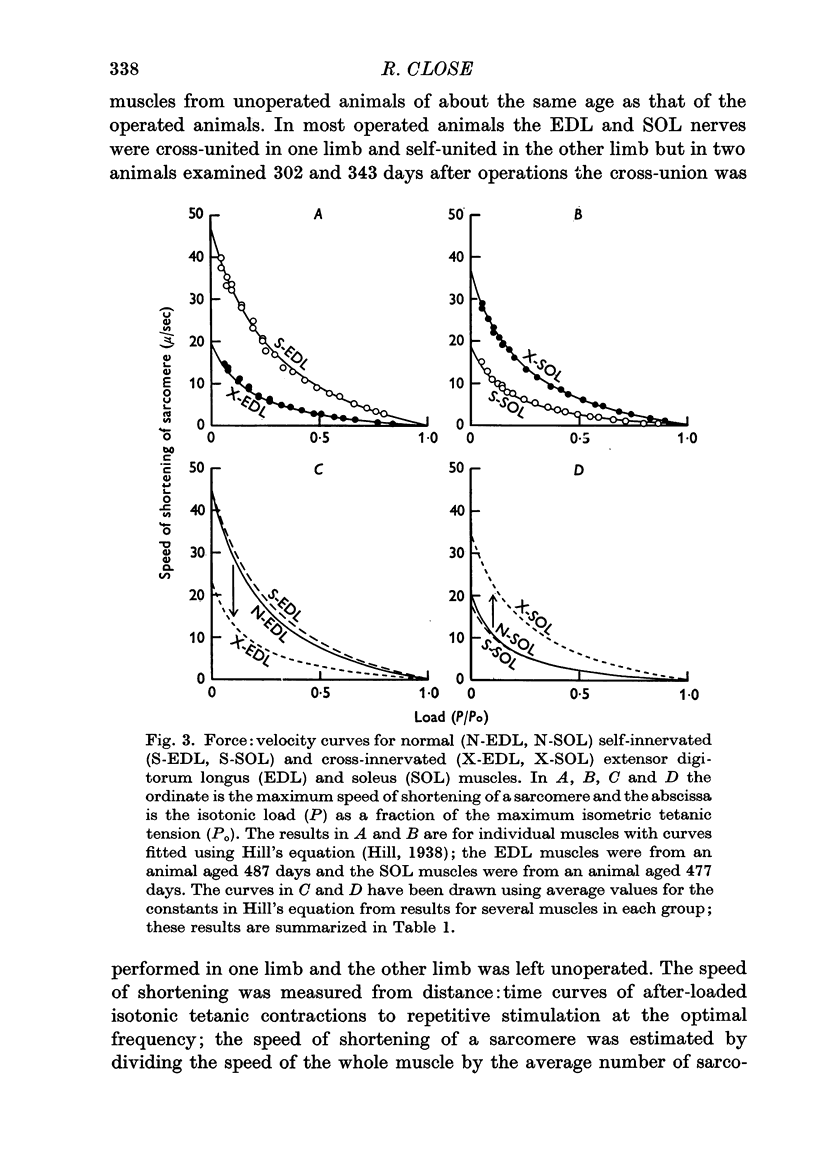
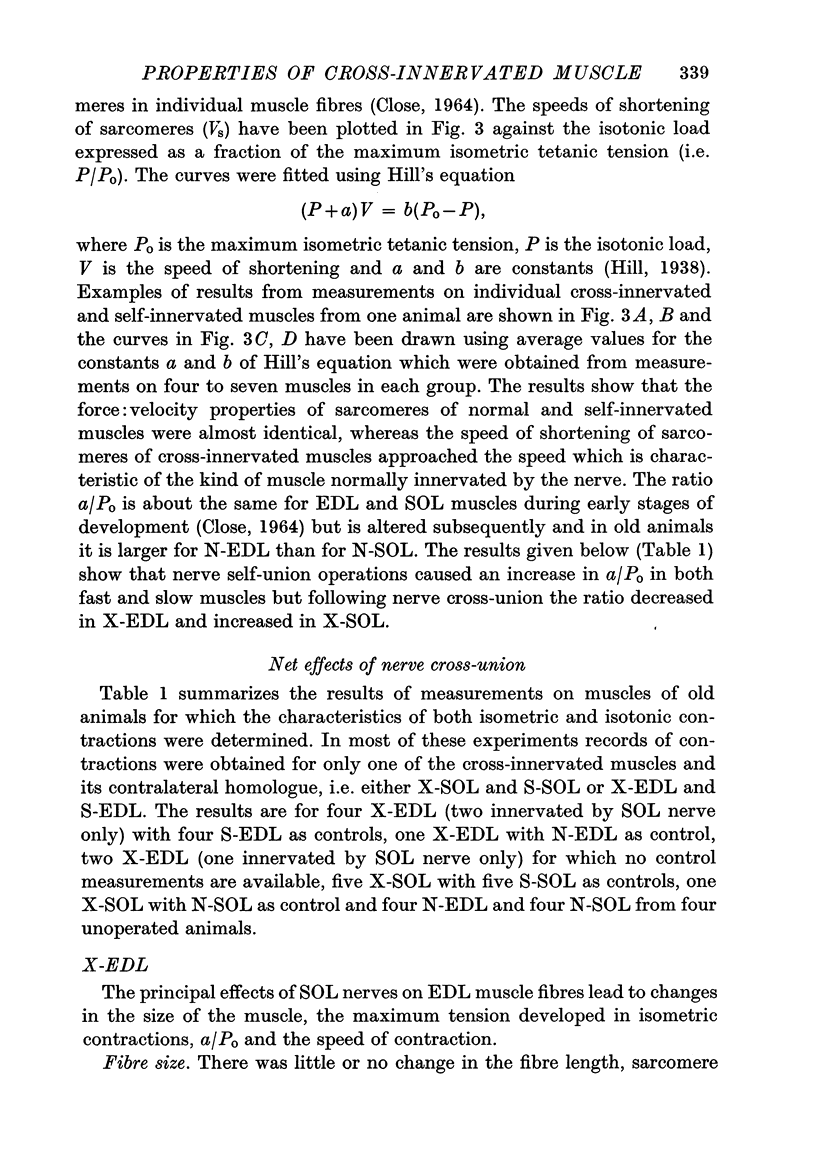
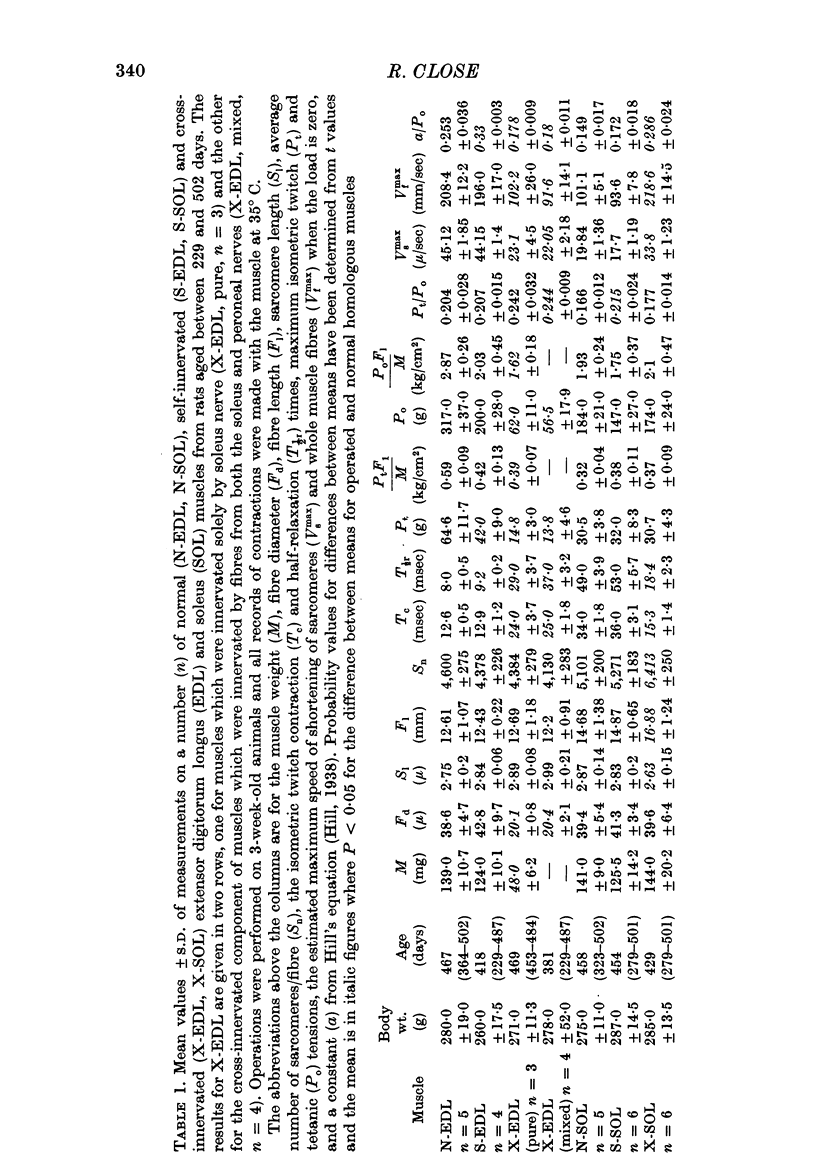
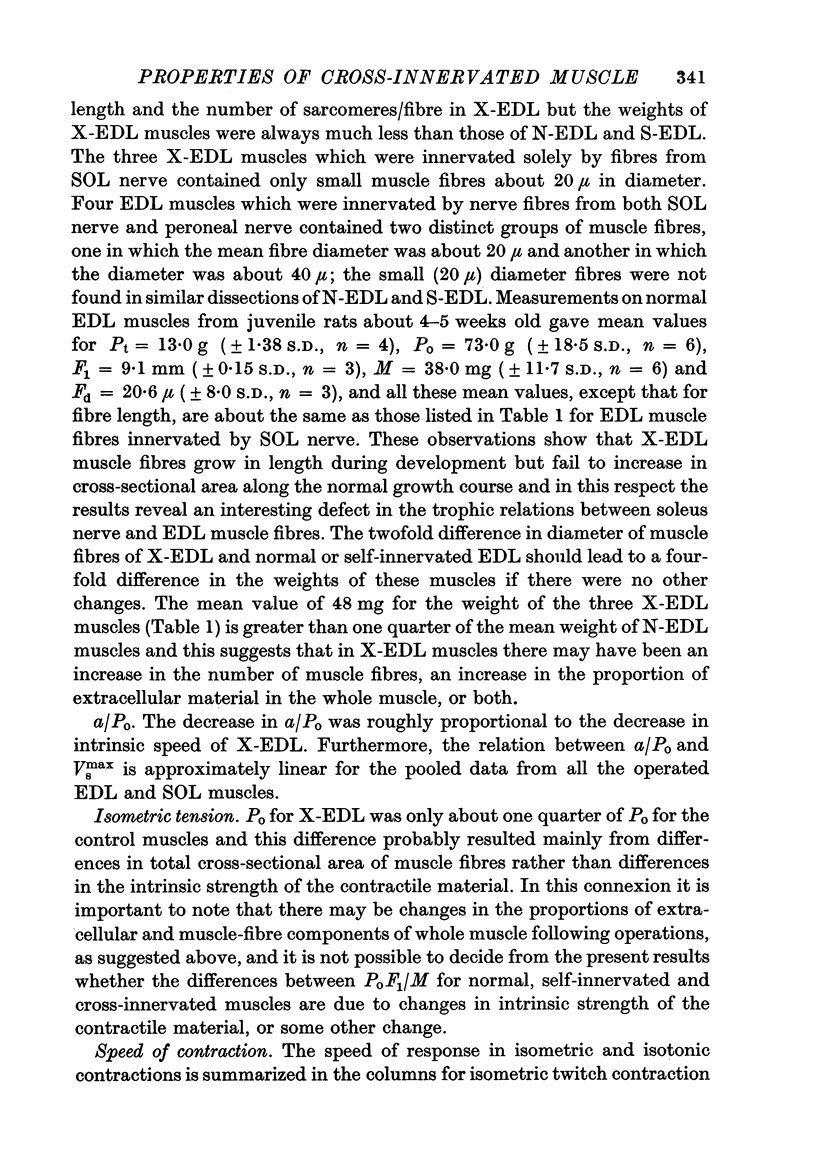
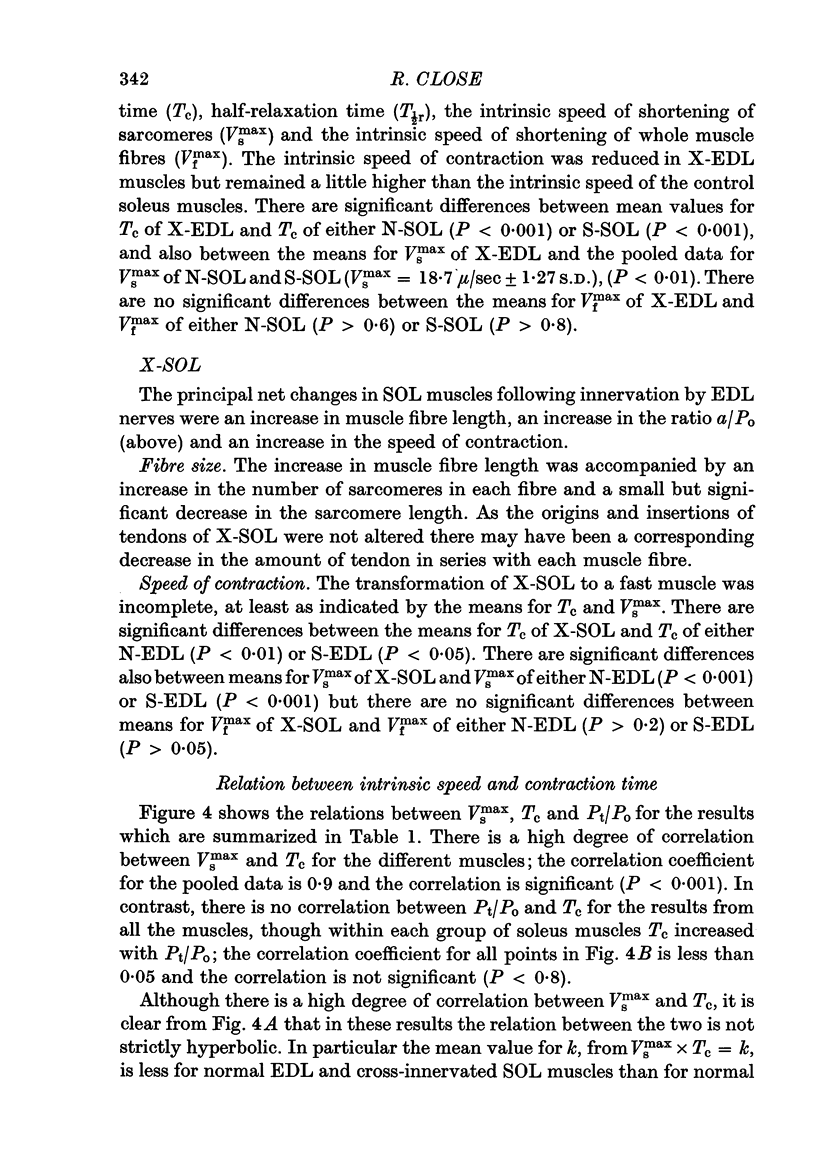
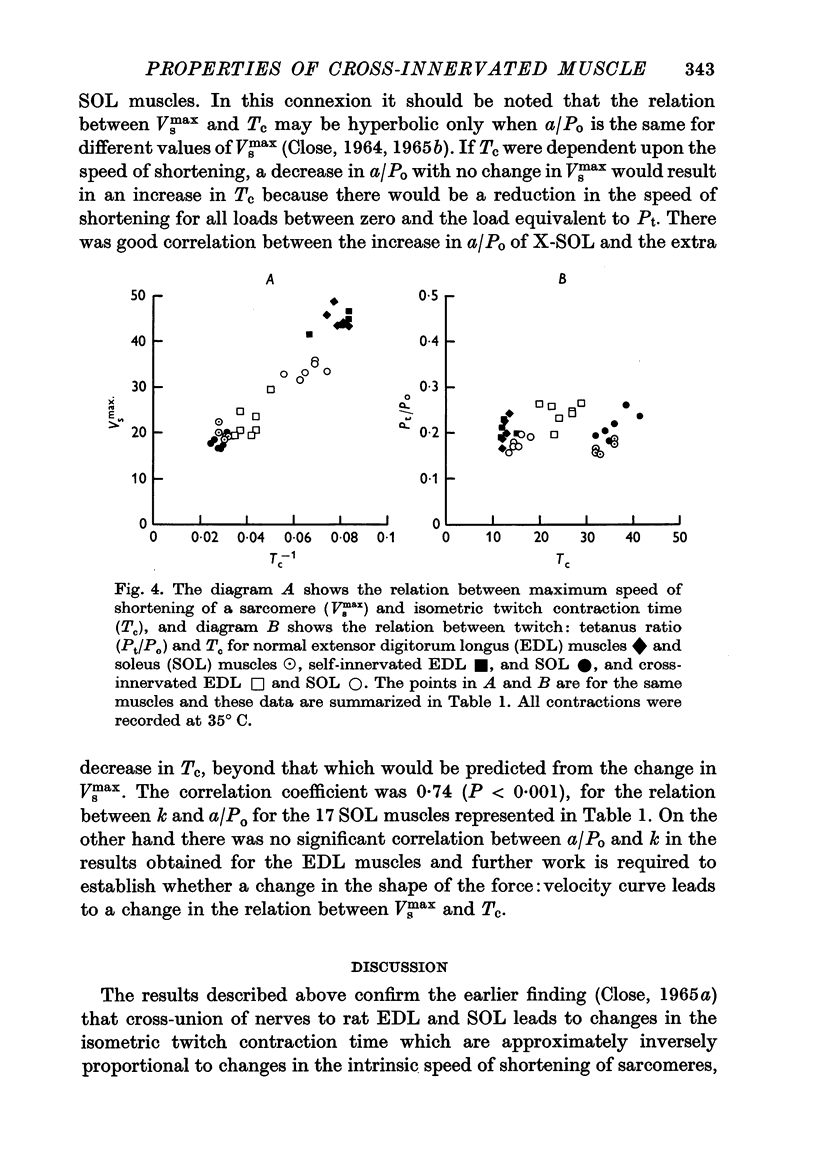
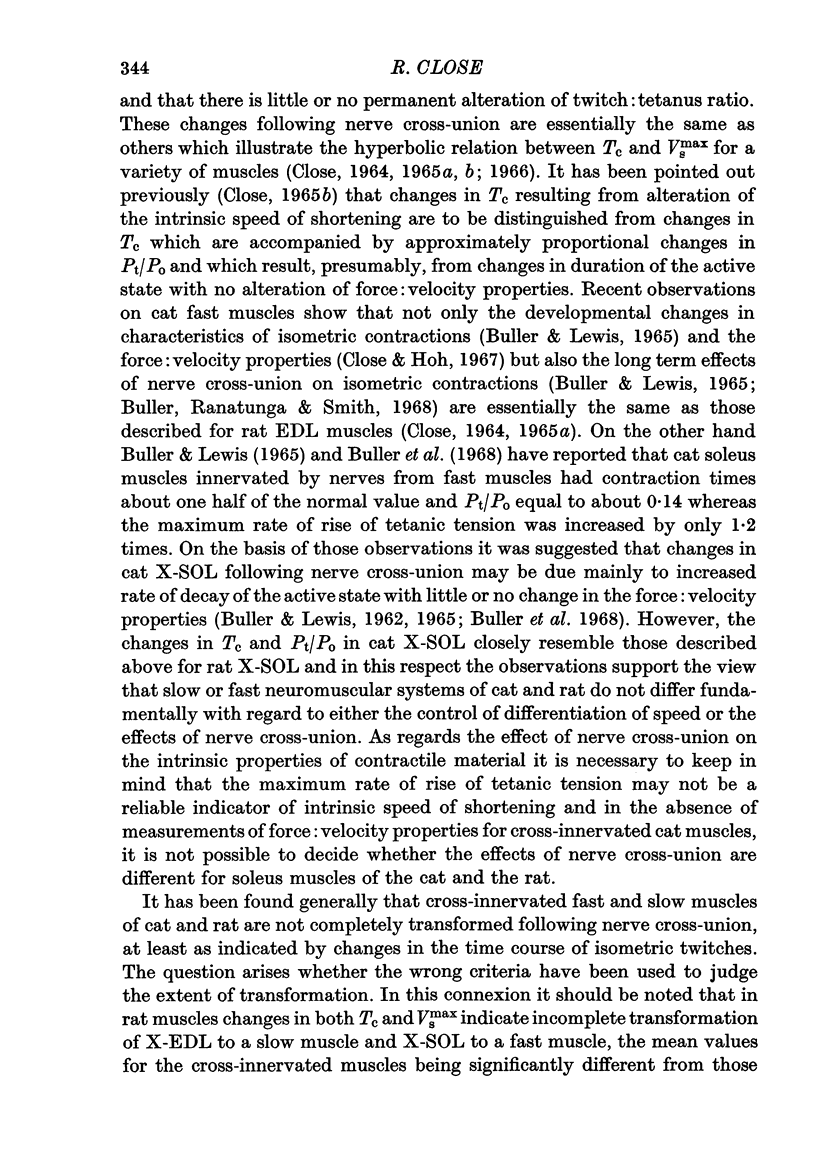
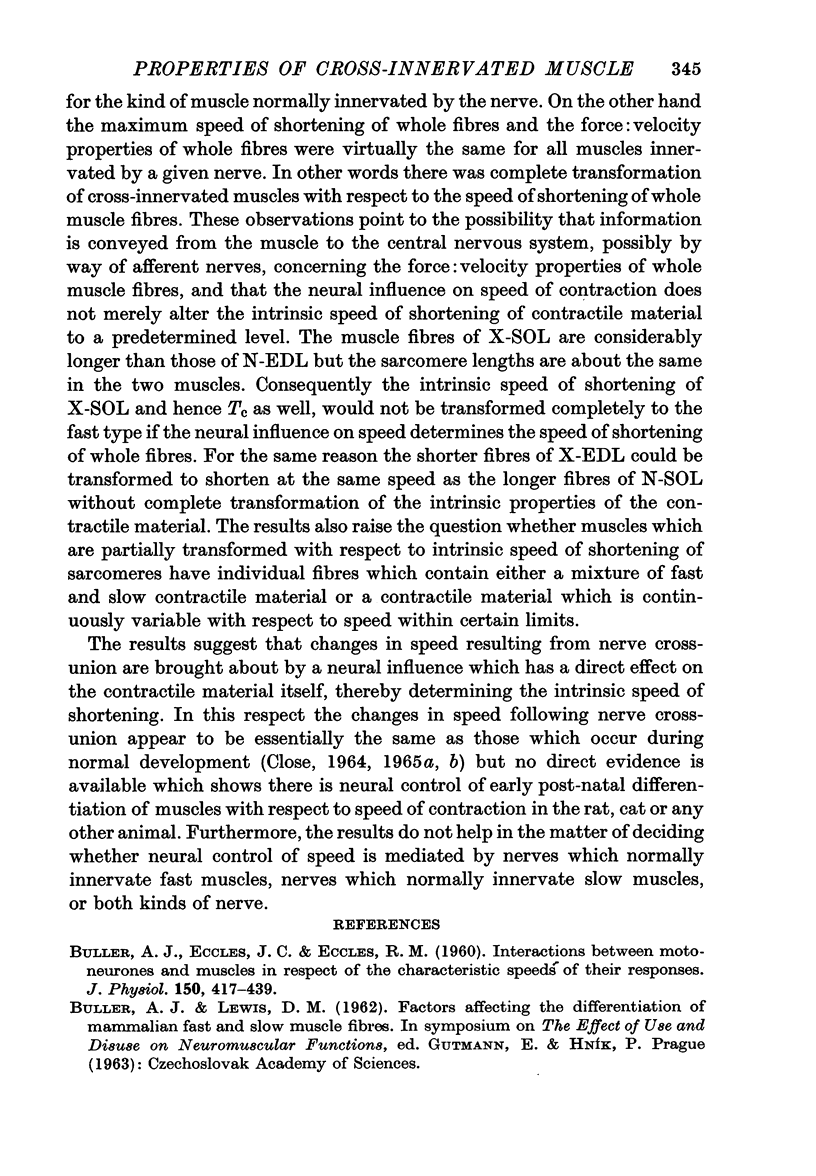
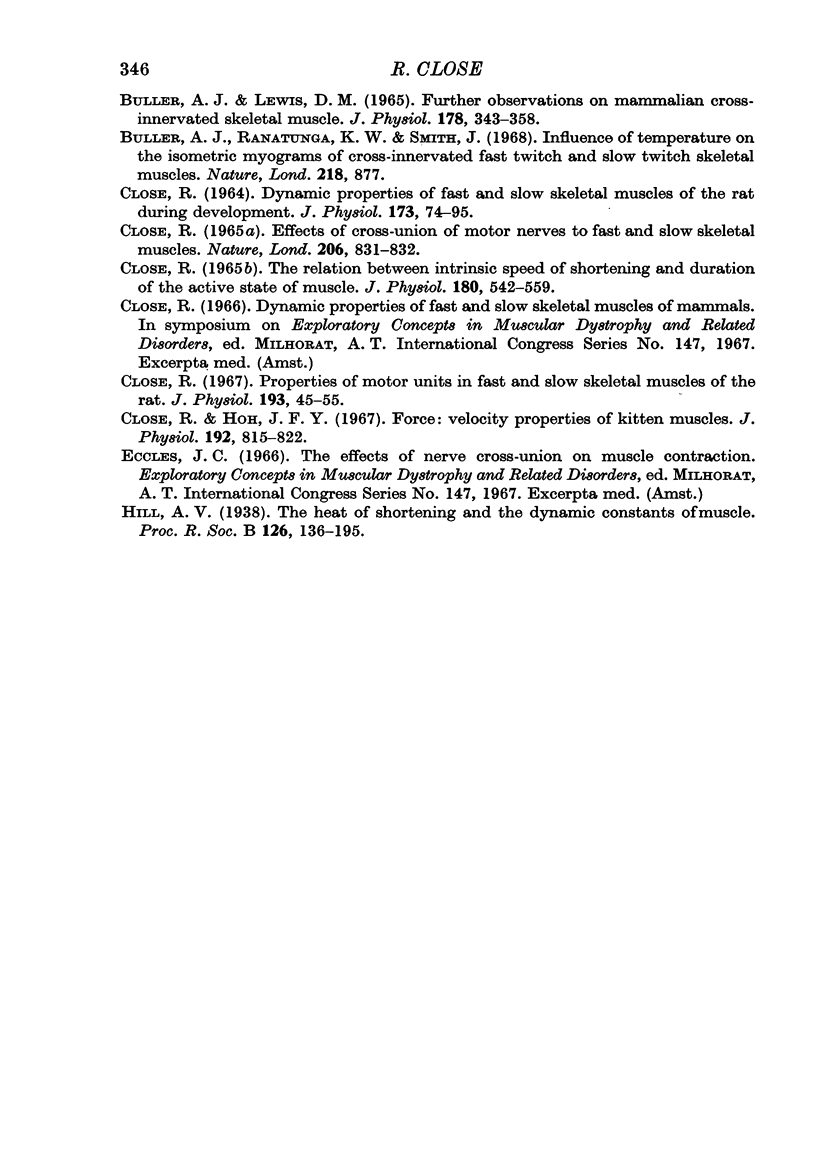
Selected References
These references are in PubMed. This may not be the complete list of references from this article.
- BULLER A. J., ECCLES J. C., ECCLES R. M. Interactions between motoneurones and muscles in respect of the characteristic speeds of their responses. J Physiol. 1960 Feb;150:417–439. doi: 10.1113/jphysiol.1960.sp006395. [DOI] [PMC free article] [PubMed] [Google Scholar]
- BULLER A. J., LEWIS D. M. FURTHER OBSERVATIONS ON MAMMALIAN CROSS-INNERVATED SKELETAL MUSCLE. J Physiol. 1965 May;178:343–358. doi: 10.1113/jphysiol.1965.sp007631. [DOI] [PMC free article] [PubMed] [Google Scholar]
- CLOSE R. DYNAMIC PROPERTIES OF FAST AND SLOW SKELETAL MUSCLES OF THE RAT DURING DEVELOPMENT. J Physiol. 1964 Sep;173:74–95. doi: 10.1113/jphysiol.1964.sp007444. [DOI] [PMC free article] [PubMed] [Google Scholar]
- Close R. Effects of cross-union of motor nerves to fast and slow skeletal muscles. Nature. 1965 May 22;206(4986):831–832. doi: 10.1038/206831a0. [DOI] [PubMed] [Google Scholar]
- Close R., Hoh J. F. Force: velocity pproperties of kitten muscles. J Physiol. 1967 Oct;192(3):815–822. doi: 10.1113/jphysiol.1967.sp008333. [DOI] [PMC free article] [PubMed] [Google Scholar]
- Close R. Properties of motor units in fast and slow skeletal muscles of the rat. J Physiol. 1967 Nov;193(1):45–55. doi: 10.1113/jphysiol.1967.sp008342. [DOI] [PMC free article] [PubMed] [Google Scholar]
- Close R. The relation between intrinsic speed of shortening and duration of the active state of muscle. J Physiol. 1965 Oct;180(3):542–559. doi: 10.1113/jphysiol.1965.sp007716. [DOI] [PMC free article] [PubMed] [Google Scholar]


